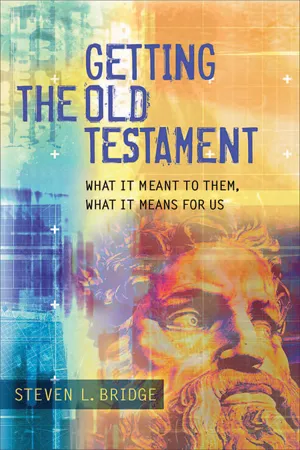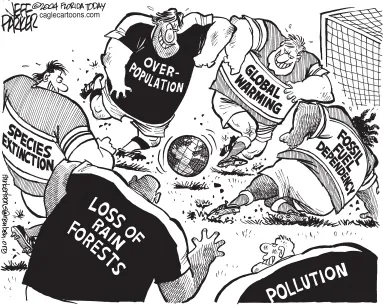![]()
Part I
The Law (Torah)
The first section of the Hebrew Bible, the Torah, consists of five books: Genesis, Exodus, Leviticus, Numbers, and Deuteronomy. Narratively speaking, they cover the earliest stages of Israel’s history, beginning with the creation of the world itself.[1] From there, the story line proceeds through the fall of humanity in the garden of Eden, the great flood, the patriarchal stories of Abraham, Isaac, Jacob, and Joseph, the rise of Moses, the exodus from Egypt, the delivery of the law on Mt. Horeb/Sinai, and the wilderness wanderings. By its conclusion, a new generation of Israelites find themselves about to enter the promised land, eager to claim that which God had pledged to them.
The chapters that follow concentrate on select episodes from this narrative history. Chapters 1 and 2 examine the dual creation stories of Genesis. They explore the extent to which the biblical text can be reconciled in light of the findings of modern science, the prevailing legends of ancient Mesopotamia, and even its own, internal contradictions. Chapter 3 considers the biblical account of Noah’s ark against the background of its popular representation, its ethical implications, and its historical presuppositions. Chapter 4 explores the Abraham narratives and demonstrates how the varying traditions surrounding this patriarch give rise to both conflict and hope in the Middle East. Finally, chapter 5 treats the Law itself: the 613 statutes and commandments found within the Torah. This chapter aims not only to survey the contents of these regulations but also to convey their primary purpose in light of their original context.
1 For a narrative timeline from creation to the united monarchy, see Appendix A.
![]()
1
The First Creation Story
— Is It True?
FOCUS TEXT: GENESIS 1:1–2:4A
Throughout the history of literature, few texts have generated more controversy than Gen 1. Individuals with even a nominal exposure to the Bible are typically familiar with its story of creation. God calls into existence the heavens and the earth and all that is in them in six days. God then rests from his creative activity on the seventh day.
Defining the Controversy
From its opening verses, the OT presents a serious challenge to any modern believer who would seek to uphold its status as “inerrant,” as “sacred Scripture,” or as “the word of God.” Taken literally, Gen 1 and the biblical chronology that follows it suggest that our planet—indeed, the entire universe—is roughly fifty-eight hundred years old. Such an assertion, of course, runs contrary to findings across a wide array of scientific disciplines. Most geologists, paleontologists, astronomers, physicists, biologists, chemists, and oceanographers judge the earth to be exponentially older—that its true age, in fact, is probably closer to 4.5 billion years.[1]
Given the tremendous disparity between these two timetables, modern believers find themselves on the horns of a dilemma. Presumably, they must either side with Scripture and disavow a vast body of scientific research or side with science and surrender the authority of Scripture. Neither of these options is particularly attractive for those who would seek to maintain both the trustworthiness of the Bible and the general validity of contemporary scientific methods.
In an effort to resolve this dilemma, some creative solutions have emerged. One strategy is to grant Scripture the ultimate authority but then to seek out empirical data that coincide with the Genesis account. The levels of inert helium in the atmosphere, the decline of the earth’s magnetic field, the accumulation of meteoritic dust on the moon, and the concentration of metals in the oceans are just some of the types of phenomena to which so-called creation scientists have appealed. But so far, these appeals have convinced neither the mainstream scientific community nor the U.S. Supreme Court. On June 19, 1987, the court ruled on Edwards v. Aguillard 7–2 against the Louisiana Creationism Act. A brief representing seventy-two Nobel-Prize-winning scientists and seventeen state academies of science was filed in opposition to the act, which required that creation science be taught alongside the theory of evolution in Louisiana public schools. The court ultimately struck down the Louisiana Creationism Act because it purported to advance a particular religious doctrine and thereby violated the Establishment Clause.[2]
An alternative strategy is to accept science’s conclusions but then to reinterpret the biblical text in conformity with them. In this regard, 2 Pet 3:8 (“With the Lord one day is like a thousand years and a thousand years like one day”) is often cited as an indication that the six days refer not to twenty-four-hour periods but to considerably longer epochs of time. It may also be noted that the order of creation in Gen 1 bears a fair resemblance to the gradual, geo-evolutionary process envisioned by scientists: light/dark, sky/sea, land, plants, fish/birds, animals, humans. But even this solution is not without its difficulties. On the assumption that God was the only witness to these events and thus the source of their description, critics decry the repeated appearance of the word “day.” Surely God could have foreseen the controversy caused by this term and circumvented it by providing a more accurate timeline! A more formidable obstacle lies with the arrangement of creation. According to Gen 1, the sun, the moon, and the stars are not created until day four—well after the earth and its accompanying landscape.[3] In addition, the sequence of events in Gen 1 clearly contradicts that found in Gen 2 (a point to which we shall return in ch. 2).
For these reasons, the dilemma has resisted simple resolution, and the perception of what’s really at stake in this issue has only galvanized the resolve of the opposing parties. The conflict is frequently billed as creation vs. evolution, religion vs. science, or the authority of God vs. the authority of humankind. The question of origins seems to cut to the heart of who we are, why we are here, and how we should live. Is human life merely the fortunate by-product of coincidental cosmic forces, the quirky result of—as the biologists’ joke goes—a sexually transmitted, terminal disease? Or has our existence and that of the universe been consciously ordained by a supernatural power? When it comes to creation, what is the truth? Certainly both sides can’t be right, can they?
Underlying this juxtaposition of science and Scripture is the widespread assumption that both are describing the same thing. Science has endeavored to provide us with an explanation of the geophysical processes involved in the formation of our planet. But to presume that this is also the purpose of Gen 1 is like presuming the meaning of an overheard conversation. In essence, it neglects the very premise out of which this text emerged. To ignore our author’s worldview and to supplant it with our own is to jeopardize the message that was originally intended to be communicated. To get at that message, one must recognize some fundamental differences between modern and ancient ways of approaching historical truth.
Historical Truth: Modern vs. Ancient Approaches
When it comes to history, we moderns tend to think of truth in sensory terms. We want to know what actually happened, as it can be apprehended by our physical senses, particularly our sight, our hearing, and our touch. We prefer to think of truth as experiential and record-able, as, for instance, in a photograph or video. To illustrate this point, consider the following photo of Earth from space.
This photograph was taken on December 7, 1972 by the crew of Apollo 17 as they rocketed toward the moon. As NASA’s accompanying caption on its Web site notes, the view extends from the Mediterranean Sea area to the polar ice cap of Antarctica. While there is heavy cloud cover in the Southern Hemisphere, the northern Saharan region of Africa is almost entirely visible. In the center of the image is the Malagasy Republic, the large island off the coast of Africa. The Arabian Peninsula can be seen at the northeastern edge of Africa, and the Asian mainland is barely distinguishable on the horizon beyond it.
“Earth from Space” December 7, 1972 (NASA). Astronaut photograph AS17-148-22727 courtesy of NASA Johnson Space Center. This image can be found online at http://spaceflight.nasa.gov/gallery/images/apollo/apollo17/html/as17-148-22727.html (accessed July 25, 2008).
I’ve showed this picture to my classes and asked, “Is this true? Did planet Earth, on December 7, 1972, really look like this? Was there an island here and a peninsula over there? Were there cloud swirls here and here and here? Did clear skies prevail up here? Was all this ice accumulated down there? Assuming, of course, that it hasn’t been digitally altered, does this photograph convey a true image?” Although my students usually look at me a little quizzically, they always answer affirmatively.
But there is another way of conceiving history, one more in line with the perspective of our biblical author, who wrote long before the advent of modern imaging technologies. To exemplify the difference, I call up a second image.
“Soccer-Ball Earth.” Image courtesy of Florida Today cartoonist Jeff Parker.
This image is a political cartoon. It portrays our planet as a ball in a soccer game. Six menacing players surround it, jockeying for position to kick and control it. Their jerseys are emblazoned with various monikers: “Overpopulation,” “Global Warming,” “Fossil Fuel Dependency,” “Pollution,” “Loss of Rain Forests,” and “Species Extinction.”
When I’ve shown this picture to my classes, I’ve asked them, “How about this one? Is our world really just athletic gear being kicked around by a half-dozen, cleat-clad giants on some vast, intergalactic field? Is this actually happening? Is this a true image?” This time, my students’ furtive, darting glances betray their concern for my mental stability. But inevitably, they answer negatively.
The difference between the photograph and the cartoon is analogous to the difference between science’s take on creation and that of Genesis. Science provides us with a geophysical snapshot of the 4.5–billion-year process by which the earth came into being. Presumably, if someone had been present throughout that period recording with a digital camcorder (and an enormous memory chip!), that’s what would have been recorded. Genesis, by contrast, offers us more of a portraiture—an artistic rendering of the event in question.
Given our modern proclivities, we may be tempted to conclude that the Genesis account of creation is therefore less true than that of science. But that’s not necessarily the case. Reconsider the cartoon. There is, in fact, a great deal of truth to it. To discern its truth claims, we merely need to decipher it by appealing to the common frames of reference which the artist has employed. For contemporary readers, this is a relatively simple task. The scene depicted is a soccer game, a physically competitive, high-contact sport. The players represent an assortment of planetary afflictions, as indicated by the names on their uniforms. Their massive builds and gritty...



